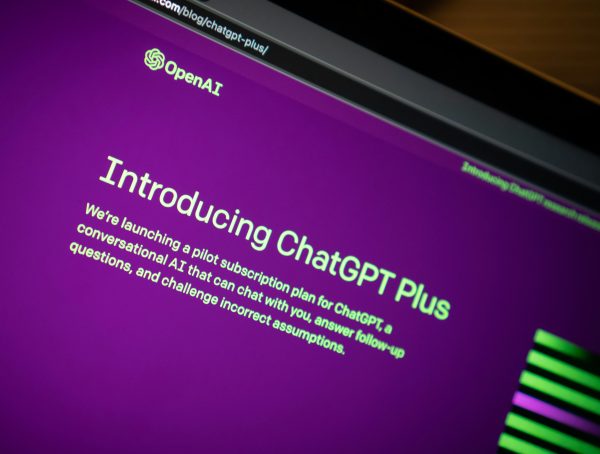“You’ve Got Mail”
In 1965, Ray Tomlinson sent the first electronic message at Massachusetts Institute for Technology (MIT) in Cambridge, Mass. Over 15 years later, electronic messaging — or email as it is more commonly known — started to gain traction with businesses and the general public.
Though it was not until 28 years after the very first electronic message was sent, that the United States House of Representatives piloted an email constituent communications program — originally starting with just seven of the 435 members.
Prior to the launch of this program in 1993 — which served as the basis for the constituent email programs many are familiar with today —, Members of Congress would communicate with their constituents via letters mailed under the Congressional Frank. The Congressional Frank is when a Member of Congress’ signature is used in substitution for prepaid postage. Today, the postage is charged to the Member’s Representational Allowance (MRA).
But with digital communications on the rise, costs have been cut significantly for Members and constituents alike. For a fixed cost, Members can easily reach large numbers of constituents and there is virtually no cost associated with constituents contacting their elected officials. To put this into context, in 2000 alone, the U.S. House received more than 48 million constituent emails — just seven years after the initial program was launched.
Over the years, Franking rules have changed, as well as other rules relating to how Members communicate with their constituents — as well as how they communicate with each other. It was only ten years ago, according to the U.S. House, that Representative Daniel Djou (Hawaii) became the first person to use an electronic device during a House floor speech. A couple of years later, during the 112th Congress (2011 – 2013), House rules were amended to permit the use of electronic devices on the floor as to not impair precedent decorum.
The new digital age has led to even more discussion about how to best regulate new means of digital communication — whether in Washington, D.C., or across the 50 states and 435 districts represented.
The Rise of Social Media
The digital landscape changed once again with the introduction of social media platforms such as Facebook (founded 2004), YouTube (founded 2005), and Twitter (founded 2006). But it was not until 2009 that Members of Congress started adopting these platforms as an additional way to share information and engage with constituents.
Facebook, YouTube, and Twitter are the three most commonly used platforms by the executive and legislative branches. In recent years, Instagram (founded 2010) has become more popular with both the Obama and Trump Administrations utilizing it, as well as members such as Senator Bob Menendez (D-N.J.) and Representative Steven Palazzo (Miss.), and even government entities such as the Centers for Disease Control and Prevention (CDC).
Snapchat (founded 2011), was, for a while, working to push into the digital political communications space, but ultimately fell flat compared to other popular platforms. A few Members of Congress — interestingly, mostly republicans, such as Senator Ted Cruz (R-Texas) — had accounts created, but never used them to the extent they did other platforms. Despite the seemingly lackluster performance from Members of Congress, Snapchat did find its niche with digital organizing — most recently announcing it has helped over one million Snapchatters register to vote in 2020 alone.
No, the Intern Did Not Tweet That
Social media, at its core, is a fairly simple concept — which is probably why so many are quick to assume duties pertaining to it are relegated to an intern. We see this when corporations on social media go viral for a post, often one that is funny or topical. The general public is quick to quip, “Oh, you should give the intern a raise for that one!”
But, in reality, social media and other digital communication platforms (such as email and websites) are powerful tools. While in theory, they might sound simplistic, many complexities need to be navigated — especially when running platforms attached to an elected official or a prominent company. To successfully navigate these complexities, you need staffers who are digitally savvy and up for the challenge — and over the years, the idea of the digital staffer has slowly become more commonplace.
A 2018 report by the Congressional Research Service found in the 113th Congress (2013 – 2014), 16-percent of U.S. Senators had staff members with either “social media” or “new media” in their titles. A few years later, during the 115th Congress (2017 – 2018), this number had doubled to 32-percent. This growth reflects a continued emphasis on the importance of electronic media and digital communications in the federal government.
So, why the push to have such a large online presence for the federal government? The answer is simple. It is a powerful way to quickly reach constituents and meet them where they are — which is online.
But in a rapidly changing space, what are these digital staffers looking toward the future for? And how are they adapting their space to better suit the needs of their constituents?
Looking Toward the Future
Gabe Garbowit is the Digital Media Specialist for Senator Tina Smith (D-Minn.). He found his way to the Hill sort of by accident — but has been invested in carving out his own space in the Senate’s digital landscape since his arrival in 2018. Mr. Garbowit’s passions in digital are rooted in analytics and the trends he notices. He mentioned that while he has not seen a shift toward new platforms — such as Tik Tok or Instagram Reels — he has noticed some of the technical skills that were more useful when he started in 2018 have become less relevant. He calls it more of a move back to the basics and less of a push for full-blown production from individual offices.
On the opposite side of the Senate building complex, Jenna Valle-Riestra, Digital Assistant to Senator Bob Casey (D-Pa.), agrees she is not seeing a shift toward new media platforms, but instead is seeing a shift in how we better use the platforms we already utilize — such as Twitter and Facebook — to bring a human relationship element to government.
“Trends in the digital space, I’ve noticed, I think we’re seeing a lot more of behind the scenes now. So, you know, you look at Mark Warner’s Two Slice Man video or all of AOC’s behind the scenes — her answering policy questions while she’s doing her make-up,” says Ms. Valle-Riestra. “My boss, you know, we filmed him calling constituents. Kind of giving people who follow our digital presence a little bit more of a comprehensive message, which I think is really powerful and humanizing. And I really hope that stays.”
The Other Side
At the end of the day the digital expansion, at its core, is about the constituent. After all, the constituents are the ones being served by elected officials and they also hold the key to getting to office or back into office — the ability to vote.
The north side of Dallas, Texas, Congressional District 32, is represented by Representative Colin Allred in the U.S. House of Representatives. One of his constituents, Will Carlisle, an aerospace engineer, says he follows Rep. Allred on social media but does not believe digital constituent communications to be a two-way street.
“One of my frustrations is that communicating digitally, especially on social media, is really a one-way street. When I see a politician post on Twitter and Facebook, 99-percent of the comments go unanswered,” says Mr. Carlisle. “And I suspect if you were to write your senator or representative a message through Facebook or Twitter, you wouldn’t get a response. So, that can be frustrating and, in a way, make you feel less valued and less represented as a constituent.”
With so many digital communication tools at our fingertips — and a federal government eager to utilize these tools — it might come as a surprise on the surface that constituents such as Mr. Carlisle are slowly starting to feel disenfranchised via means of meaningful ways of communication. But the concern is valid and not exclusive to the constituent side of the equation.
There is hope, though, for individuals like Mr. Carlisle. Mr. Garbowit, from Sen. Smith’s office, mentioned a trend he has noticed is that Congress, and other institutions in the federal government, are taking notice of this seemingly one-way street. He is hopeful the coming years will pave the way for a two-way street that further strengthens the constituent-member relationship, and argues a fluency in digital from both members and staffers is needed for this to happen.
“What we’re going to start seeing is more two-way communications between congressional offices and their constituents,” says Mr. Garbowit. “So, what I think I would like to see is Congress starts to be able to use social media to gather feedback, as well as to give updates about the office.”
Impacts of the COVID-19 Pandemic
At the beginning of 2020, the COVID-19 pandemic upended many lives and livelihoods across the United States — and the world. But it is often in times of hardship we are able to catch a glimpse of the silver lining and emerge on the other end with lessons learned and a fresh perspective.
Ms. Valle-Riestra admits that while the pandemic has impacted her work, the pivot has not been as dramatic for her as it might have been for those whose work is not inherently rooted in digital. Instead, she sees the effects mostly showing themselves in the value that is further added to the digital space. And this added value could become a key player in helping strengthen member-constituent communications moving forward.
“The COVID-19 pandemic has definitely changed the digital atmosphere a lot. Not necessarily in that, I’m doing things that are really different, but I think in terms of the value that digital holds and the presence that digital holds. Because all of a sudden everything is digital.”








